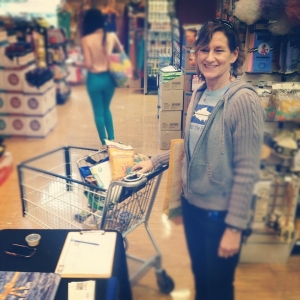Today’s blogger is Susie Santilena, an environmental engineer in water quality at Heal the Bay.
When I stepped into the Dockweiler youth center meeting room, it was one of those sunny winter Southern California days that make the rest of the country jealous this time of the year. The room had a great view of the beach and sparkling blue ocean outside — the perfect setting for the meeting I was attending, which was all about the direction of Santa Monica Bay Restoration Commission (the organization charged with restoring the very Bay at which I was gawking). The Santa Monica Bay Restoration Commission (SMBRC) is a state organization with the mission to restore and enhance the Santa Monica Bay through actions and partnerships that improve water quality, conserve and rehabilitate natural resources, and to protect the Bay’s benefits and values. Heal the Bay sits on a number of its subcommittees, including the Watershed Advisory Council (WAC).
Each year, the SMBRC holds a meeting of their Watershed Advisory Committee to brainstorm on next steps for implementing their Bay Restoration Plan. This plan is important because it is the de facto road map to guide the SMBRC in restoring the Bay. A wide variety of stakeholders sit on the WAC, and come to this annual meeting with hopes of getting their priority issues incorporated into the Plan.
Not all of the SMBRC’s stakeholders see eye-to-eye on all of the issues discussed. Heal the Bay’s goal in participating in this council is to encourage the SMBRC to focus its efforts on projects that will gather data and lead to the strongest protection of water quality and coastal resources in the Santa Monica Bay as possible. For instance, we speak in support of the SMBRC’s efforts to restore wetland habitats and efforts to facilitate bay-wide habitat monitoring.
After a lively public comment session and an update on the progress the SMBRC was making on its current restoration plan, we broke into groups to brainstorm on the SMBRC’s plan for the next year. We counted off from one to three, each number putting individuals into a random group with the others who counted off the same number. I ended up in a group with an official from Malibu, an officer of the County lifeguards, an ocean monitoring specialist from a large, public-owned sanitation organization, a member of a local community group and a monitoring researcher at a municipal water district that discharges to Malibu Creek (which has previously been pegged as the largest single contributor to nutrient impairments in the Creek). It was quite an eclectic group, and I was anxious to see how the brainstorming session would go.
While the stakeholders in our group had MAJOR differences of opinion when it came some things, such as the contribution (read scapegoating) of natural sources to pollution, everyone was respectful of each other’s perspective, and I was pleasantly surprised to find that there were some issues on which we were able to find common ground. The need for increased water conservation and reuse was a big one, as well as the need for reliable funding sources for monitoring efforts in the Malibu Creek Watershed. Despite our different perspectives, we all agreed that these should be priorities for the SMBRC in the coming year.
Maybe the beautiful weather and ocean scene outside left me overly optimistic, but I’m hopeful that the ideas we developed at the WAC’s brainstorming session will help take us one step closer to restoring the Bay.



 Meanwhile, the rest of Heal the Bay’s staff descended on Whole Foods’ three Santa Monica locations, manning tables throughout the day to engage shoppers about protecting our local beaches and watersheds. As part of their vibrant community engagement programs, the stores generously donated 5% of all net proceeds from the day to Heal the Bay’s Santa Monica Pier Aquarium. Receiving financial support is fantastic, but developing human capital is important too. Eveline Bravo, our cleanup manager, recruited a new member to our volunteer-training program at the 5th and Wilshire location. Raymond, who also organizes volunteer activities at a Santa Monica yoga studio, is now part of our crew.
Meanwhile, the rest of Heal the Bay’s staff descended on Whole Foods’ three Santa Monica locations, manning tables throughout the day to engage shoppers about protecting our local beaches and watersheds. As part of their vibrant community engagement programs, the stores generously donated 5% of all net proceeds from the day to Heal the Bay’s Santa Monica Pier Aquarium. Receiving financial support is fantastic, but developing human capital is important too. Eveline Bravo, our cleanup manager, recruited a new member to our volunteer-training program at the 5th and Wilshire location. Raymond, who also organizes volunteer activities at a Santa Monica yoga studio, is now part of our crew.